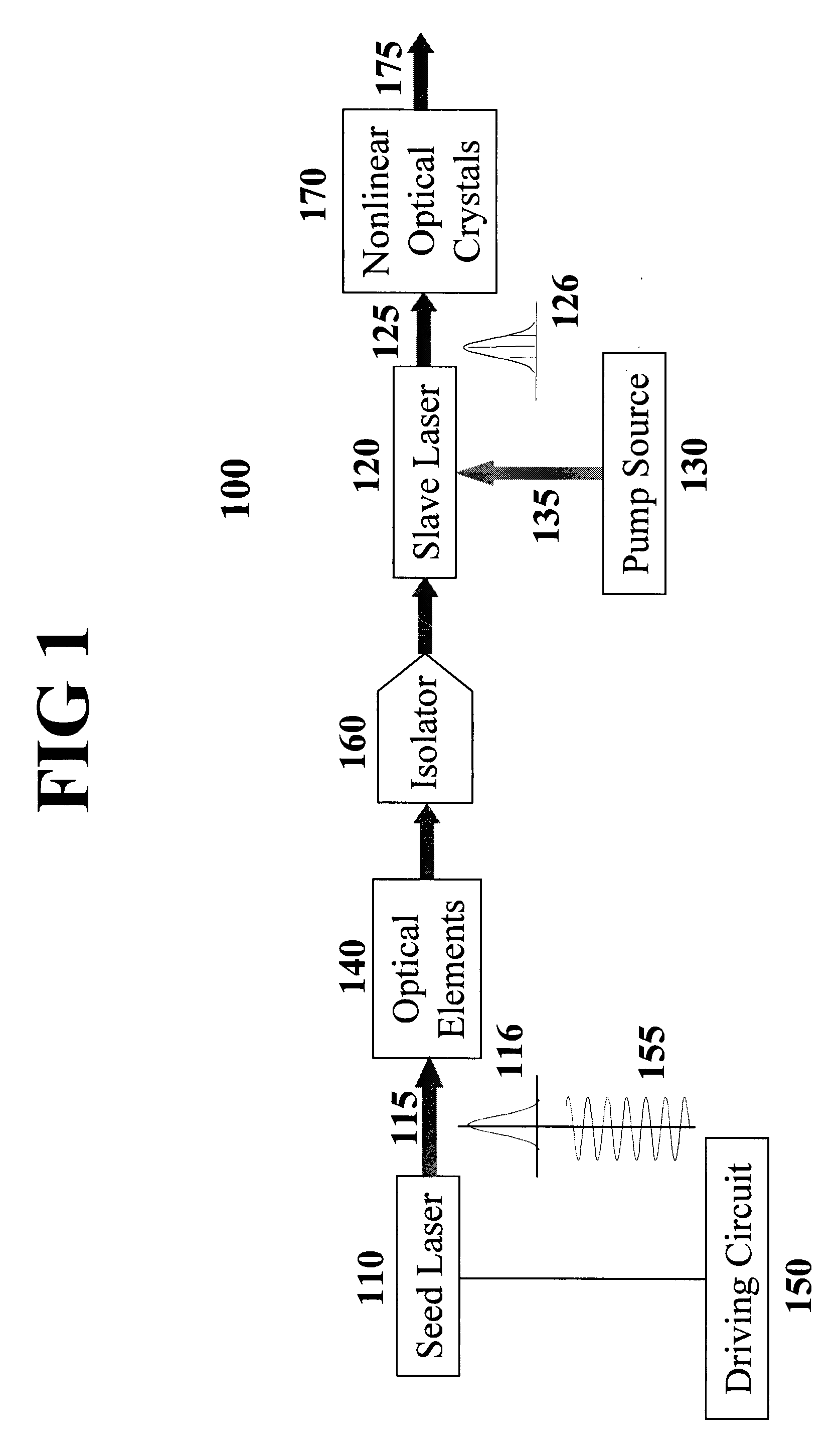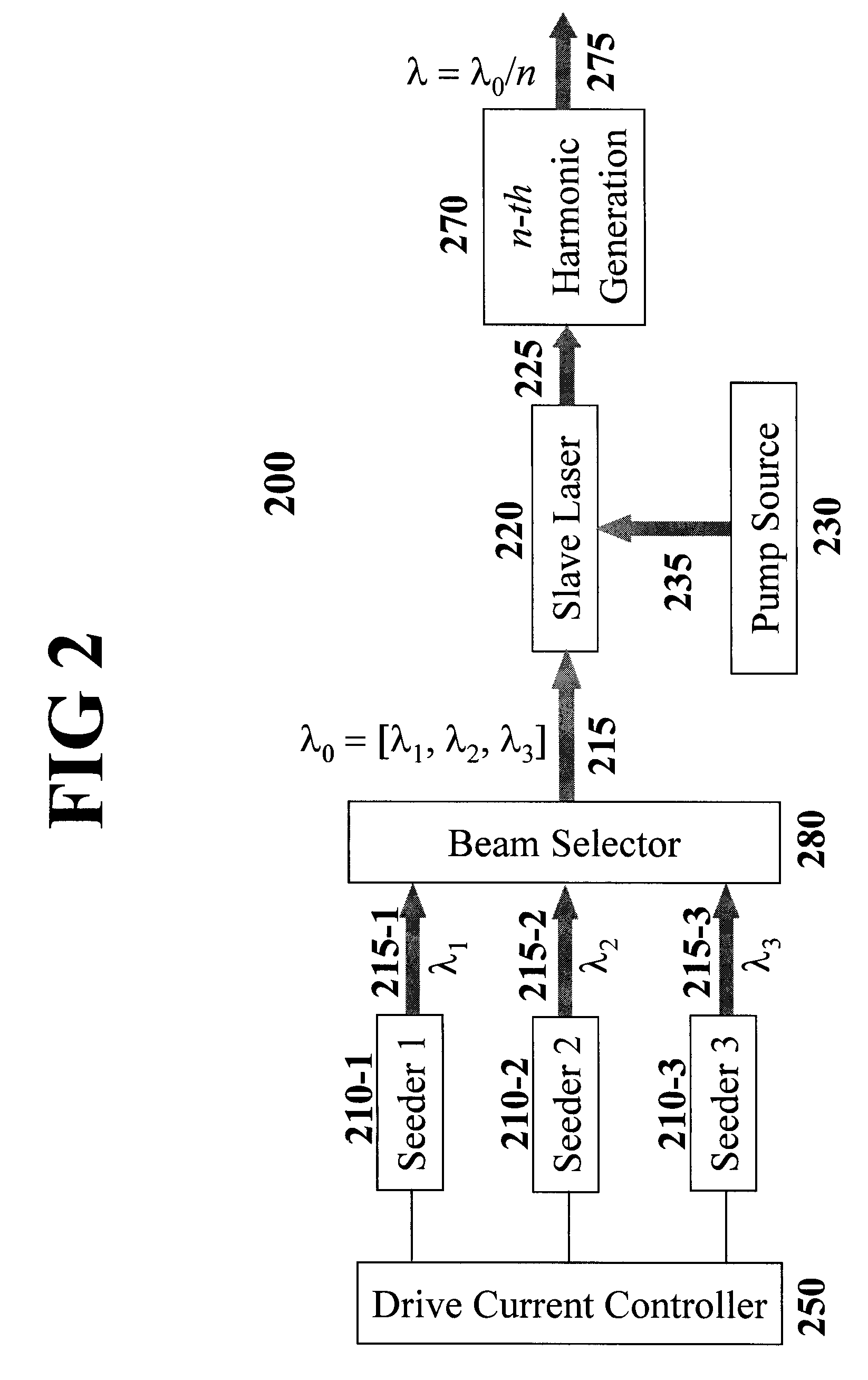Method and apparatus for producing UV laser from all-solid-state system
a technology of solid-state systems and lasers, applied in semiconductor lasers, excitation processes/apparatus, laser details, etc., can solve problems such as internal remaining stress, poor surface finish, and insufficient current sources of coherent uv light, and achieve short pulse width (100 khz), high efficiency, and low cost
- Summary
- Abstract
- Description
- Claims
- Application Information
AI Technical Summary
Benefits of technology
Problems solved by technology
Method used
Image
Examples
Embodiment Construction
[0042]As will be described in more detail hereafter, there is disclosed herein an all-solid-state UV laser system capable of producing short pulse width, variable pulse shape, and high repetition rate with high efficiency and low cost.
[0043]Referring to drawings and in particular to FIG. 1, wherein a conceptual block diagram of an all-solid-state UV laser 100 is illustrated. As shown in FIG. 1, the all-solid-state UV laser system 100 is composed of a seed laser 110 as the master, a seeded laser 120 as the slave, a pump assembly 130 that emits light 135 for optically activating the seeded laser, optical elements 140 for shaping the seed beam 115, one or more optical isolator(s) 160 for preventing interference to and / or damage of the seeder due to optical feedback from the seeded laser, and one or more nonlinear optical crystal(s) 170 for converting the wavelength of the laser output 125 to UV 175. The drive circuit 150 generates RF modulated drive current 155 such that the wavelength...
PUM
 Login to View More
Login to View More Abstract
Description
Claims
Application Information
 Login to View More
Login to View More - R&D
- Intellectual Property
- Life Sciences
- Materials
- Tech Scout
- Unparalleled Data Quality
- Higher Quality Content
- 60% Fewer Hallucinations
Browse by: Latest US Patents, China's latest patents, Technical Efficacy Thesaurus, Application Domain, Technology Topic, Popular Technical Reports.
© 2025 PatSnap. All rights reserved.Legal|Privacy policy|Modern Slavery Act Transparency Statement|Sitemap|About US| Contact US: help@patsnap.com



